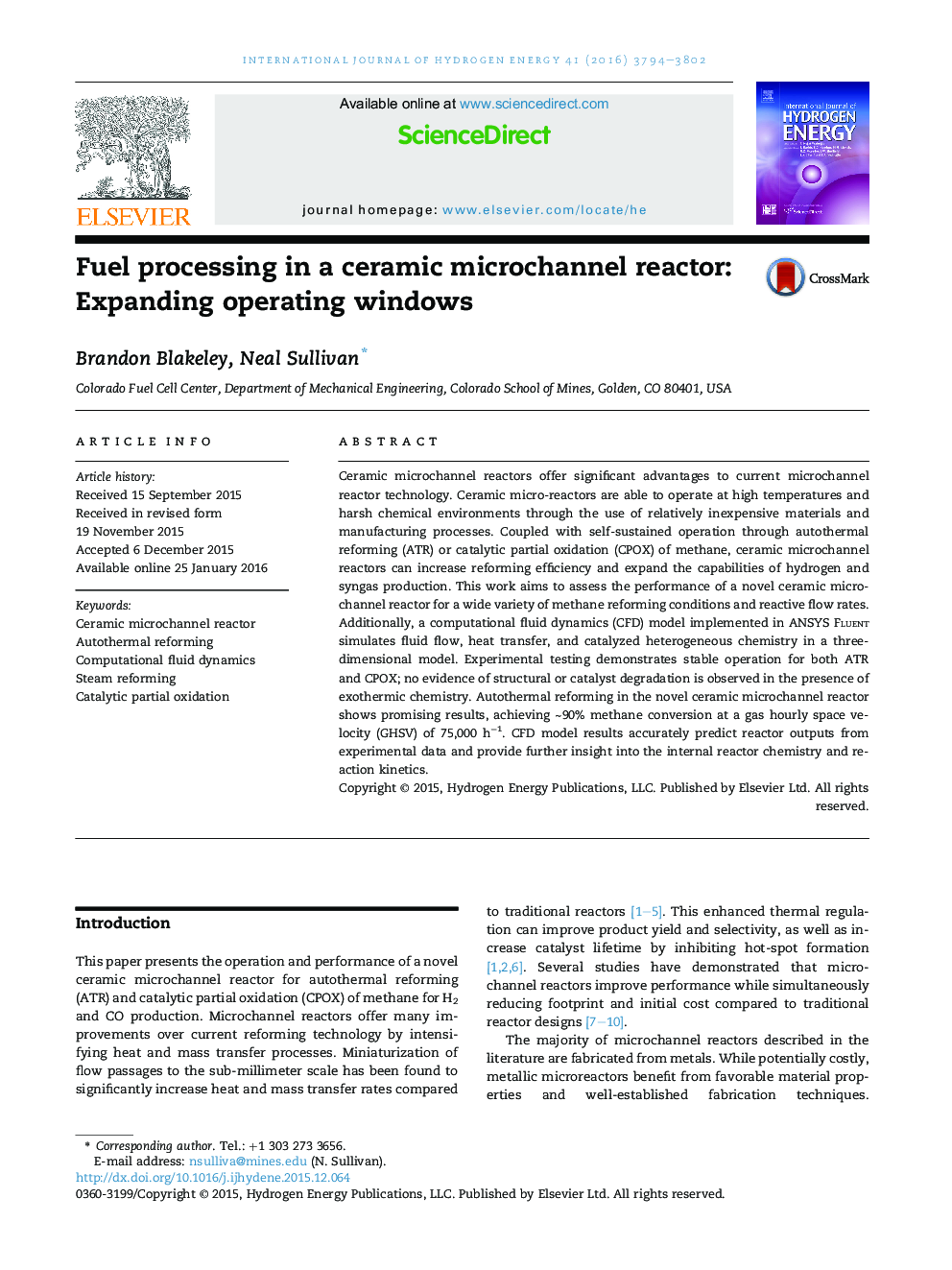| کد مقاله | کد نشریه | سال انتشار | مقاله انگلیسی | نسخه تمام متن |
|---|---|---|---|---|
| 1277908 | 1497419 | 2016 | 9 صفحه PDF | دانلود رایگان |
• A ceramic microchannel reactor is used for methane reforming.
• Experiments show high performance for steam-methane reforming, catalytic partial oxidation, and autothermal reforming.
• 3D CFD models with elementary chemical kinetics are used to interpret experimental results.
• The ceramic microchannel reactor demonstrates 90% methane conversion at GHSV = 75,000 h−1 and 750 °C.
Ceramic microchannel reactors offer significant advantages to current microchannel reactor technology. Ceramic micro-reactors are able to operate at high temperatures and harsh chemical environments through the use of relatively inexpensive materials and manufacturing processes. Coupled with self-sustained operation through autothermal reforming (ATR) or catalytic partial oxidation (CPOX) of methane, ceramic microchannel reactors can increase reforming efficiency and expand the capabilities of hydrogen and syngas production. This work aims to assess the performance of a novel ceramic microchannel reactor for a wide variety of methane reforming conditions and reactive flow rates. Additionally, a computational fluid dynamics (CFD) model implemented in ANSYS Fluent simulates fluid flow, heat transfer, and catalyzed heterogeneous chemistry in a three-dimensional model. Experimental testing demonstrates stable operation for both ATR and CPOX; no evidence of structural or catalyst degradation is observed in the presence of exothermic chemistry. Autothermal reforming in the novel ceramic microchannel reactor shows promising results, achieving ∼90% methane conversion at a gas hourly space velocity (GHSV) of 75,000 h−1. CFD model results accurately predict reactor outputs from experimental data and provide further insight into the internal reactor chemistry and reaction kinetics.
Journal: International Journal of Hydrogen Energy - Volume 41, Issue 6, 19 February 2016, Pages 3794–3802
